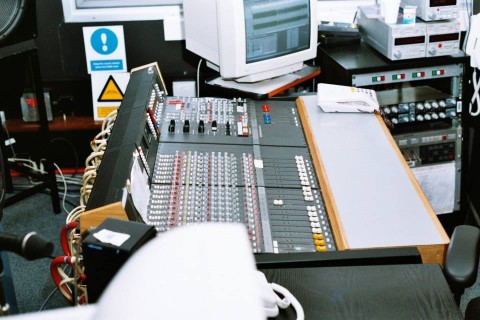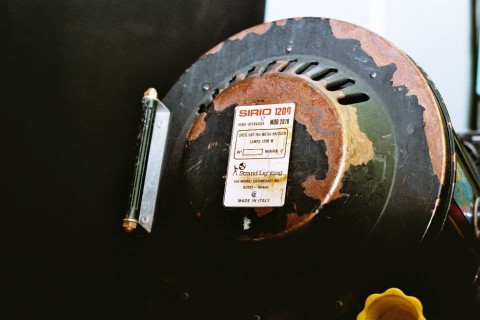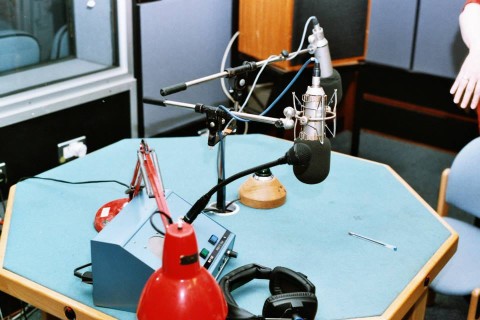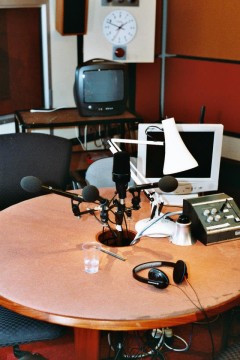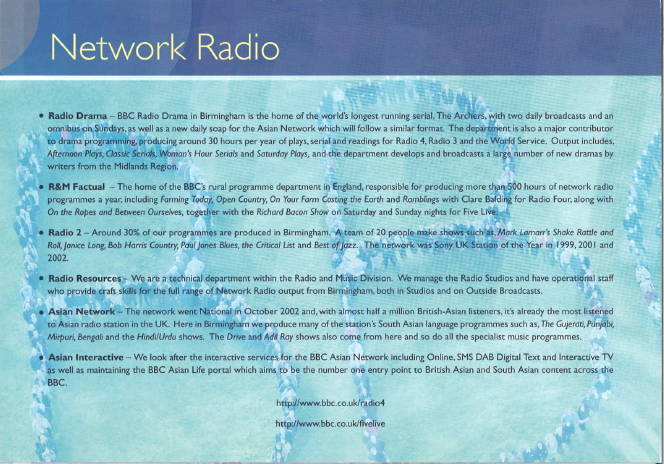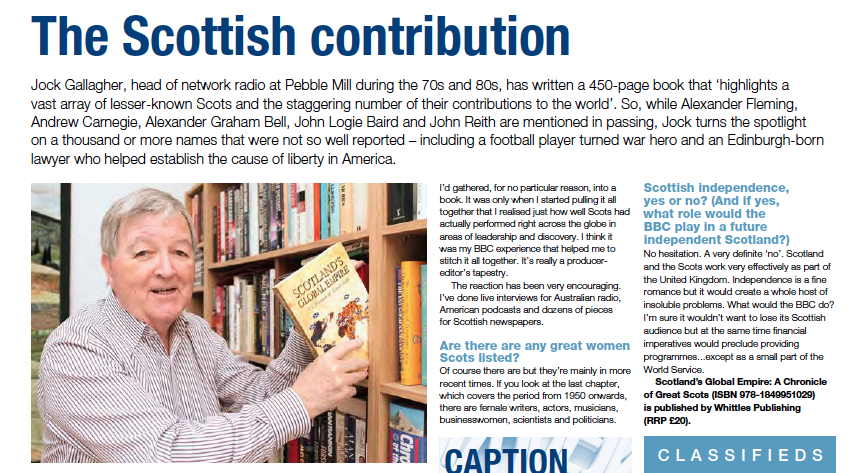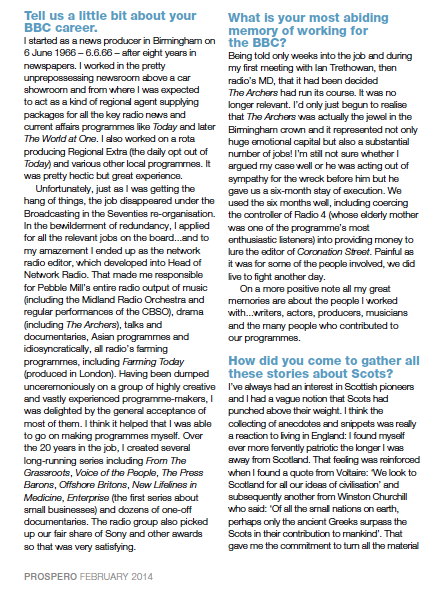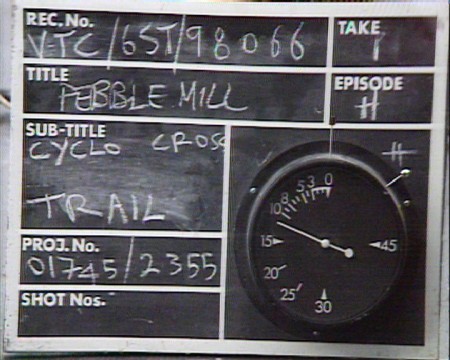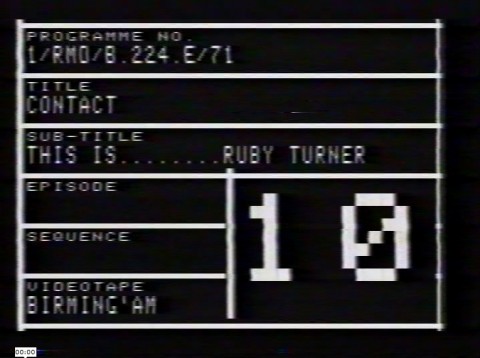Photos by Martin Fenton, no reproduction without permission. Martin took these photos in 2003. Radio Studio 1 was the largest radio studio at Pebble Mill, and was also used for some television series in the latter years of Pebble Mill.
“Studio 1 was once a venue for glorious orchestral recordings, but by this point it had been deliberately priced out of the market (Abbey Road number 1 was cheaper) and was used for little more than Farming Today
The Neumann U47s , I was told were used at the insistence of Radio 3, when Studio 1 was regularly used for orchestral concerts.” [The mics may be Neumann U87s, see comment below from Andy Groves.]
Martin Fenton
(The Neumann U47s were condenser mics apparently well known for their clear sound. They were apparently the favourite mic of the Beatles manager, George Martin.)
The following comments were left on the Pebble Mill Facebook page:
Caroline Feldon Parsons: ‘Lots of happy memories doing programmes for Radio 3 in that studio. Everything from live Lunchtime Concerts to live drivetime programmes like In Tune, and lots of recorded chamber music. I did a fair bit of page-turning for pianists too!’
Chris Marshall: ‘Yes, it was really busy with Radio 3 programmes until the bizarre decisions around Producer Choice and bimedia put paid to that. Tony Wass could give lots of info on the technical stuff.’
Jane Ward: ‘Occasionally larger scale orchestral and brass band sessions for Radio 2 took place in there as well. I produced a fair number and, like Caroline, was involved in other ways before that, either page turning or acting as orchestral librarian before I became a producer… I arrived at Pebble Mill in February 1987 as the Music Assistant, a post which not only served Radios 2 & 3 but which ultimately extended to become a research and support service for the whole building.’
Andy Groves: ‘I think you will find the mics are a Neumann U87 rather than 47. Both fine microphones.’
Peter Trevena: ‘I think that the lamp is still working on Doctors‘
